Making delicious, restaurant quality filled pasta is easier than you think: check out my recipe for butternut squash, pine nut and sage ravioli.
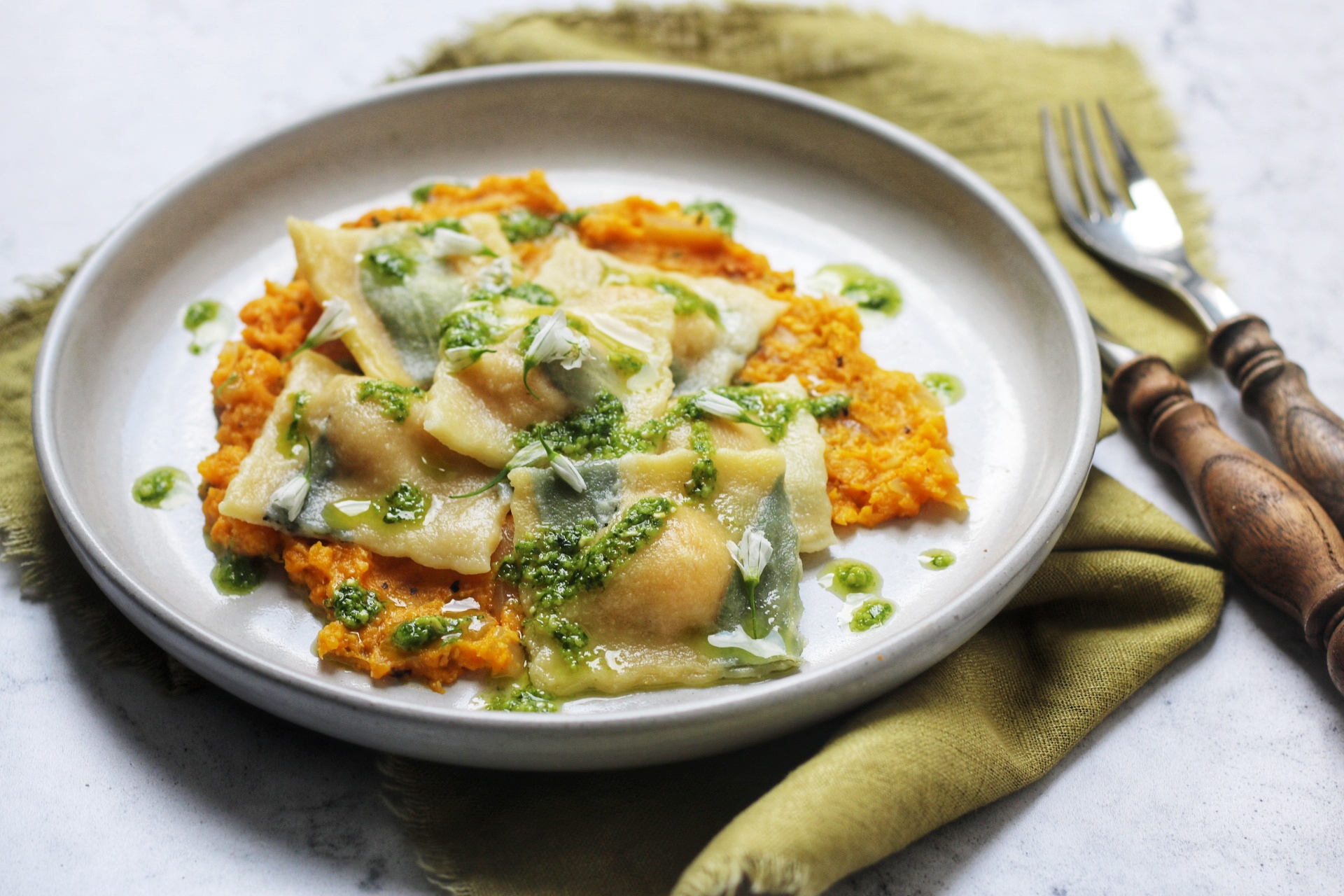
Making ravioli from scratch
It's fair to say we are absolutely spoilt but the wide range of different pasta varieties we can now purchase in the supermarket. Both fresh and dried pasta are in abundance and it seems as though new shapes are added to the range every year.
As much as I love making my own pasta (and I have recipes for both fresh egg pasta and a vegan, egg-free pasta dough here) I do rely heavily on the dried pasta section for staples like linguine as well as more unusual shapes. But, there's one type of pasta which I never buy, and that's ravioli. Why? Because you can make something so much more special and flavourful at home.
The great thing about this recipe is not only how cheap it is to make your own fresh pasta, but that with a few store cupboard staples you can have a fantastic, tasty dish in no time at all. Why would you buy store bought when you can make your own delicious filled pasta from scratch?!
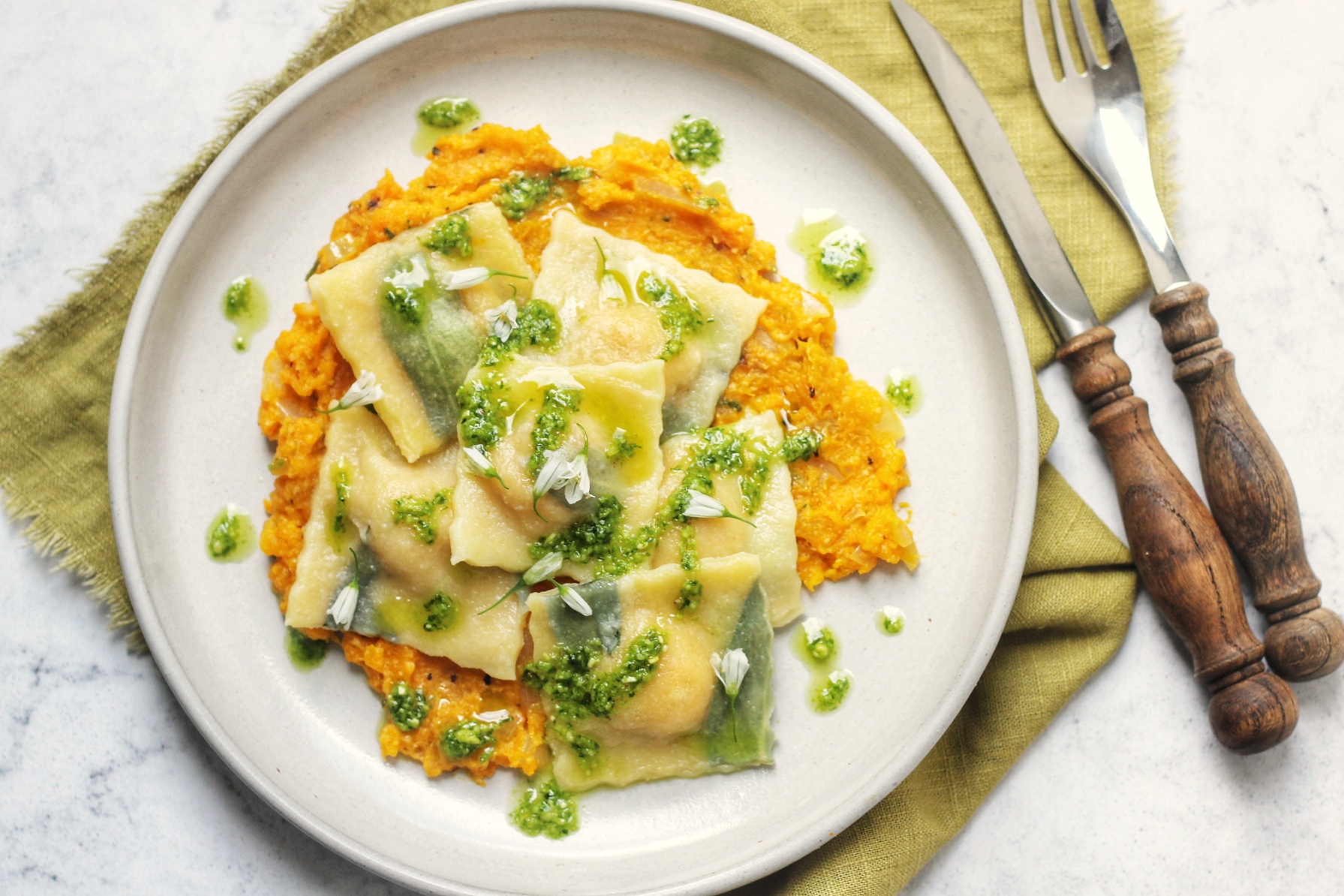
Jump to:
Ingredients
You'll be surprised at how few ingredients there are in this recipe:
- butternut squash
- white onion
- pine-nuts
- fresh sage
- parmesan
- salt and pepper to season
- pasta dough
The flavours aren't complicated allowing each ingredient to shine!
Full breakdown of quantities can be found in the recipe card below.
Instructions
When it comes to making your own pasta dough you have two options. The first is to make a rich, egg pasta which will be quite tender and have a bright yellow colour thanks to the yolks. If you are cooking for anyone with an egg allergy, or if you eat a plant based diet you can still make a fresh pasta dough using coarse semolina and water.
For full instructions check out the egg pasta recipe here and the vegan pasta recipe here.
Making ravioli from scratch is not as hard as you think. Once you've mixed and rested the dough, all you need to do is roll it out into two thin sheets. One will form the base and the second will form the top of the ravioli. The trick to really good quality ravioli is to keep the sheets of pasta nice and thin without being so thin the filling bursts through!
If you have a pasta machine then getting the correct thickness shouldn't be too much trouble at all, just slowly work your way down through the thickness settings. If you're hand rolling then it will take more muscle! But, it absolutely is doable and I roll all of my pasta by hand.
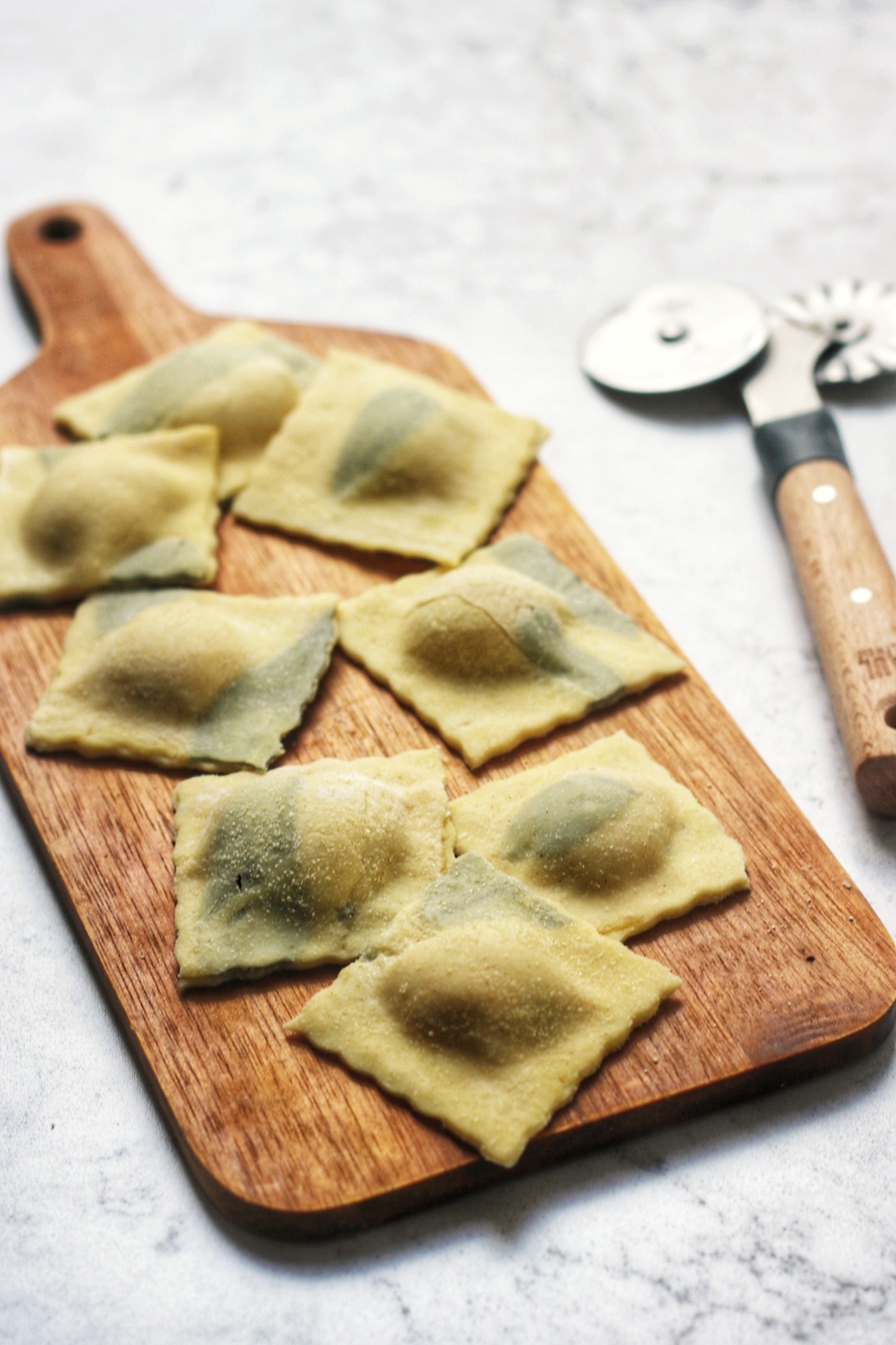
Laminated pasta dough
The eagle eyed among you might have noticed that my pasta has a leaf pattern on it. These are sage leaves that have been added to the dough as I've been rolling it. This is known as laminated pasta dough. I go into more detail.about this technique here.
Its not as hard as you might think and is a fantastic way to make your ravioli (or any pasta for that matter) look really special. I think it transforms any pasta dish to something dinner party worthy. It also adds a wonderful herby flavour to the pasta.
How to make the filling
Once you've rolled out your dough you need to add your filling. The ability to create a filling exactly to your liking is why I prefer to make ravioli from scratch, rather than relying on store bought. In this recipe you can adjust the amount of vegan parmesan, salt and pepper, or even the sage so that the mix is exactly how you want it. I always recommend tasting the filling before you fill the ravioli. That way there will be no surprises when you take your first bite.
I've made this butternut squash, pine nut and sage ravioli many a time. If I'm Inna rush I will boil the squash and fry the onions with minced garlic. But, if you have the time then I will always recommend that you roast the squash and the garlic for a more intense flavour. I've included the roasting method in the recipe itself but the boiling method in the notes.
I use vegan parmesan to add some cheesey, nuttiness to the filling these days but if you do eat dairy and rennet, feel free to use regular parmesan instead. It's what I used when I first developed this dish.
Pine nuts in the filling are optional. They add a nice crunch but you may want to reduce the number and just use them as a topping (more on serving suggestions below).
When making ravioli at home it's also really tempting to add a big spoonful to each ravioli but this will make it more prone to bursting. My top tips for filling ravioli are to add just one heaped teaspoon of filling per ravioli and to make sure you've chilled it first. By chilling it first it's easier to handle and add to the dough in little round mounds. The filling is already cooked so it just needs to warm up in the pan.
Cooking ravioli
There's no real trick to cooking ravioli, simply add it to a pan of simmering water that has been lightly seasoned with olive oil and a good pinch of salt.
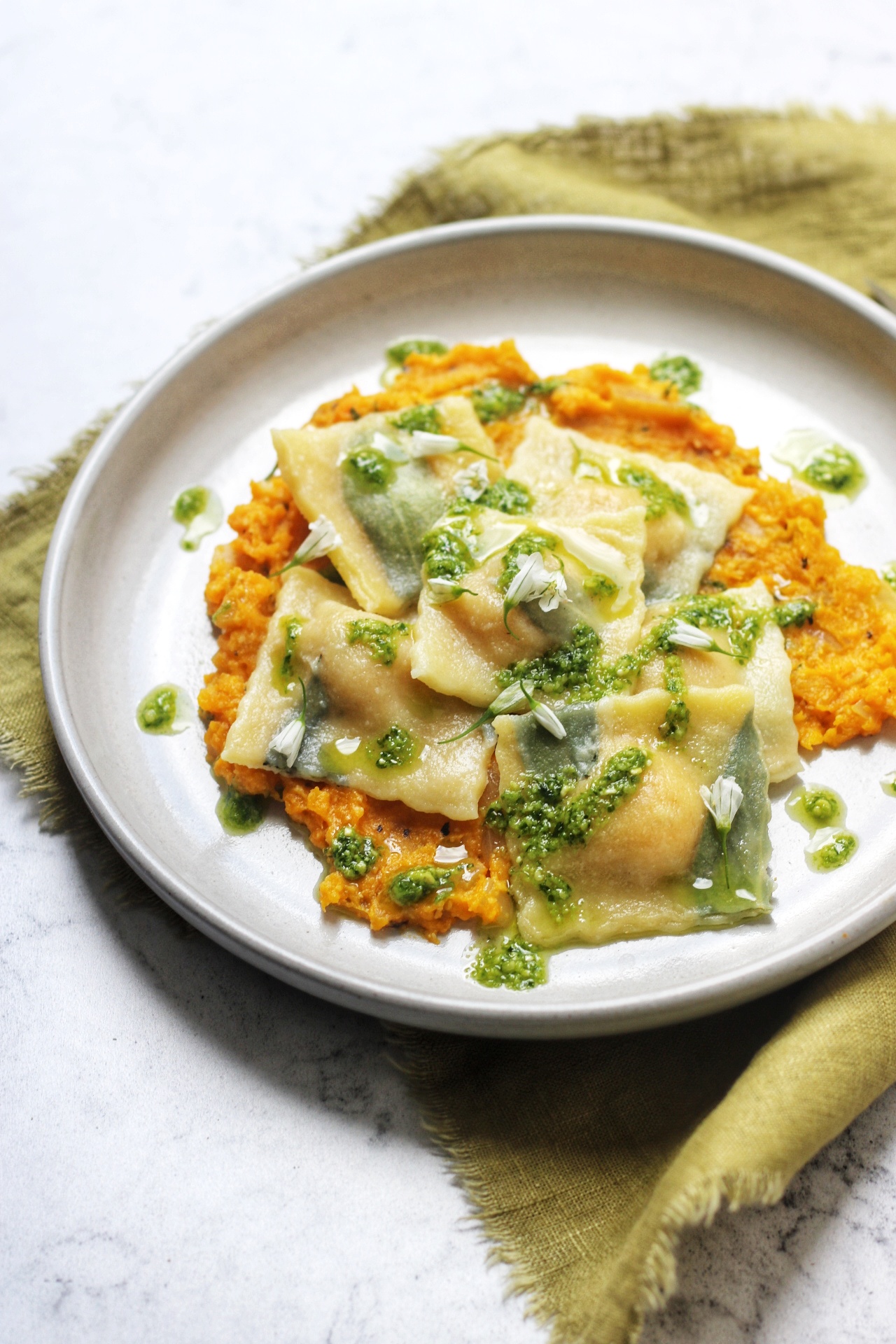
Serving suggestions for my butternut squash, pine nut and sage ravioli
Over the years I have served this ravioli with a range of different sauces and toppings. In the photos I had some leftover butternut squash puree and used this as a bed. I then drizzled over a wild garlic pesto and scattered over a few three cornered leek flowers.
Any pesto works well with this dish. As does a light cream based sauce.
Instead of scattering edible flowers, toasted pine nuts add some crunch and crispy fried sage leaves add another hit of flavour. Of course a sprinkling of parmesan also goes down well! The choice is yours.
Top Tip
The one risk with making ravioli is that they burst while cooking and the filling leaks out or becomes watery. To avoid this, don't let the water boil once you've added the pasta. Only simmer the ravioli gently. This may mean it takes a little longer to cook but you won't risk any of them splitting.
FAQ
You will know when the ravioli are cooked as they will begin to float on the top of the water.
Do you want to make this for a dinner party? Or perhaps you want to make a big batch to enjoy at a later date? My butternut squash, pine nut and sage ravioli will keep in the fridge for 3 days. Alternatively you can freeze them for up to 3 months. Whichever method you use, make sure they are in an air tight container.
The recipe
This recipe will serve 6-8 people as a starter or 4 people as a main course.
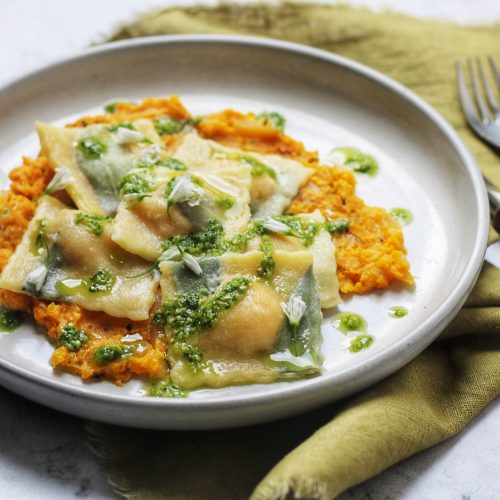
Butternut Squash with Pine Nut and Sage Ravioli
Ingredients
- 1 butternut squash
- 0.5 white onion
- 150 grams pine-nuts
- 8 leaves fresh sage
- 100 grams parmesan
- Salt and pepper to season
- 150 grams pasta dough
Instructions
- The butternut squash can be boiled, or for extra flavour roasted with some olive oil in the oven for roughly 40mins at gas mark ⅚. Leave it in its skin but cut it in half to expose half of the flesh.
- If you boil the squash it will only take 10-15mins. (This certainly saves time but roasted tastes better!)
- At the same time fry off the onions (finely chopped) in a small pan, then toast three quarters of the pine nuts.
- Once the squash is done remove from its skin and mash. Finely chop the sage and mix in along with the onions and pine nuts. Grate in about 4 tablespoon of Parmesan and season to taste.
- Take your dough and, either using a pasta machine or a rolling pin, roll a long thin sheet of pasta. You’ll know it's the correct thickness when you can see your hand through the sheet – this will be the thinnest setting on your pasta machine.
- Cut the pasta sheet in half and lay both strips next to each other and very slightly wet the edges of the strip of pasta with a pastry brush or by hand if need be.
- Spoon the butternut squash filling in a line leaving about 2 inches, or 5cm, between each teaspoon. (Depending on how thick your sheet is you may be able to do two rows).
- Place the other strip directly on top of the other and gently press on the dough around the filling to remove any excess air. (This is to stop the ravioli exploding while it cooks!)
- With slightly wet hands, press to make sure the dough is firmly sealed. Then, using a sharp knife or a ravioli cutter, cut out each individual ravioli. Place these on to a baking sheet lightly dusted with semolina and repeat until you've used up all of the pasta dough and filling.
- Once you're ready to cook, bring a pan of water to the boil. Add a little salt and olive oil before adding the ravioli to the pan.
- The ravioli will cook in 5-8 minutes. You will know it's done when it starts to float.
- Serve with your chosen sauce and some extra sage and pine nuts.

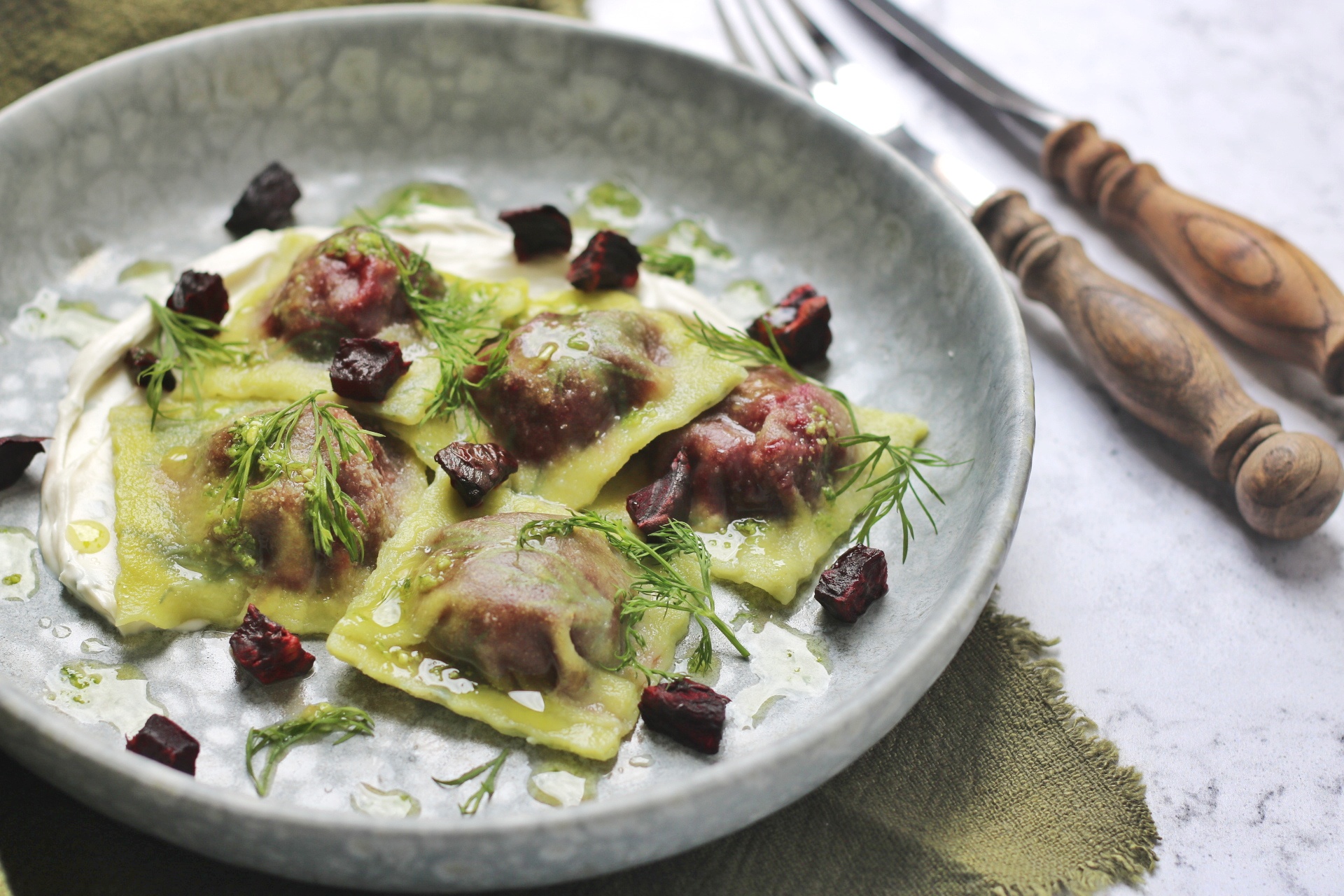
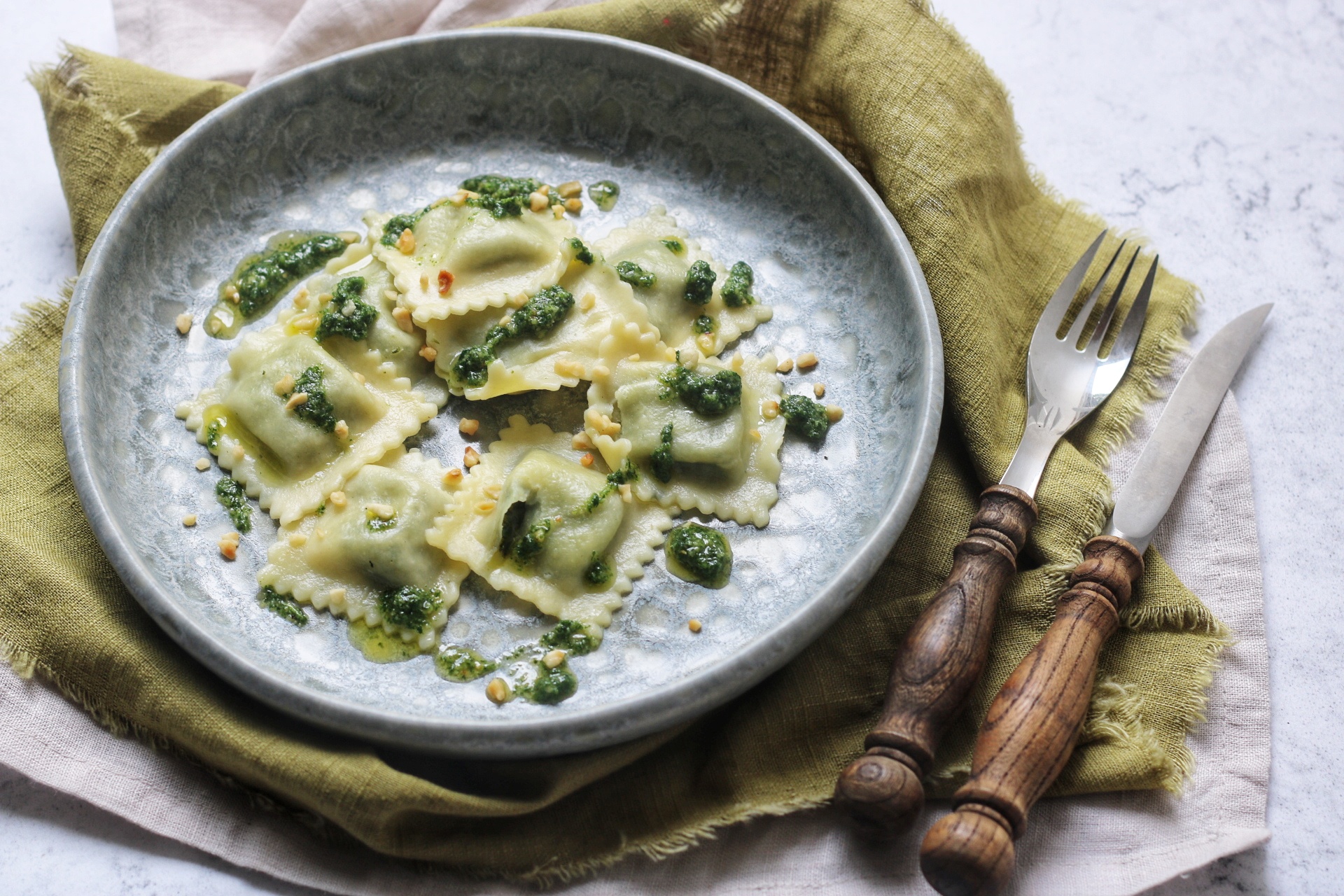
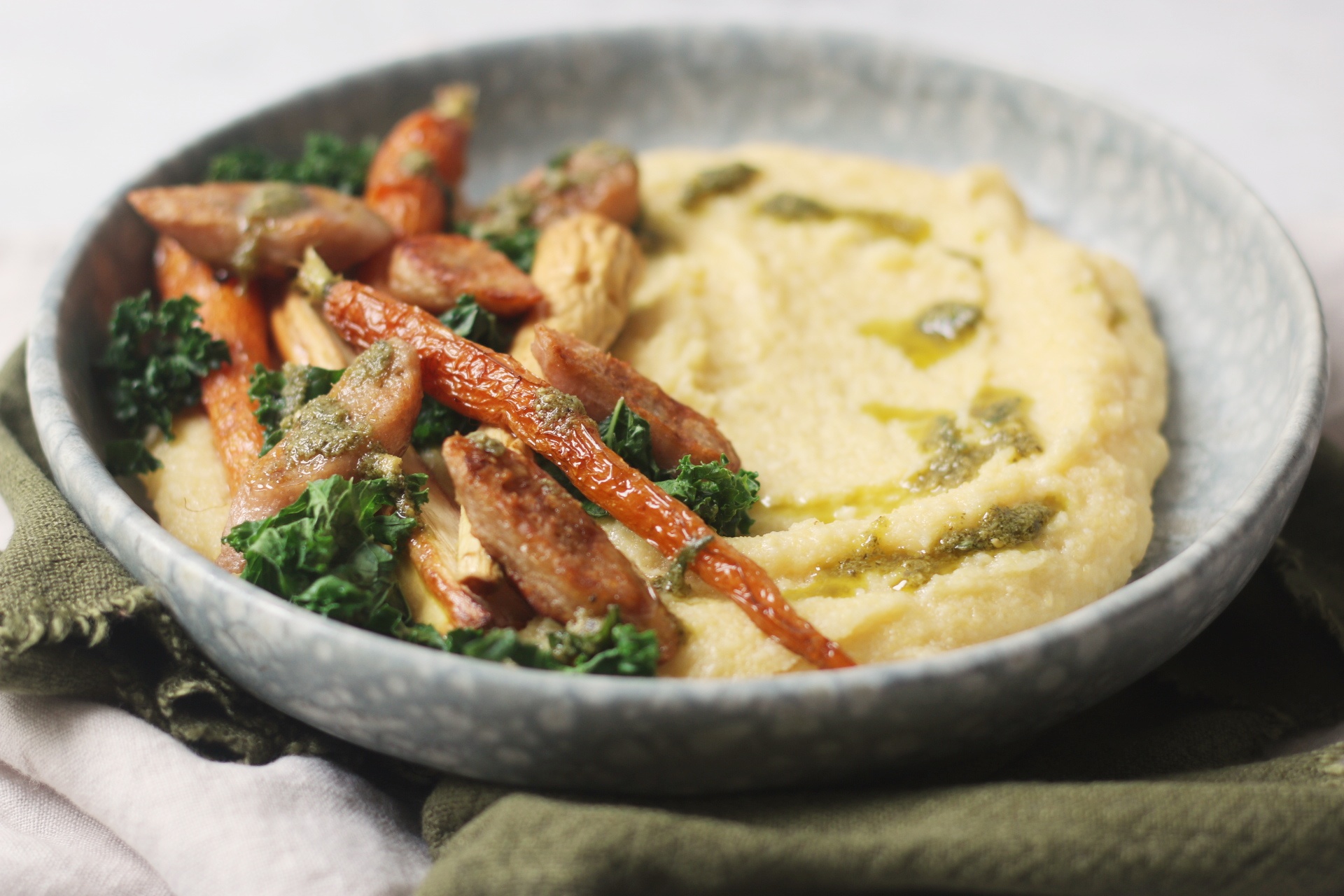
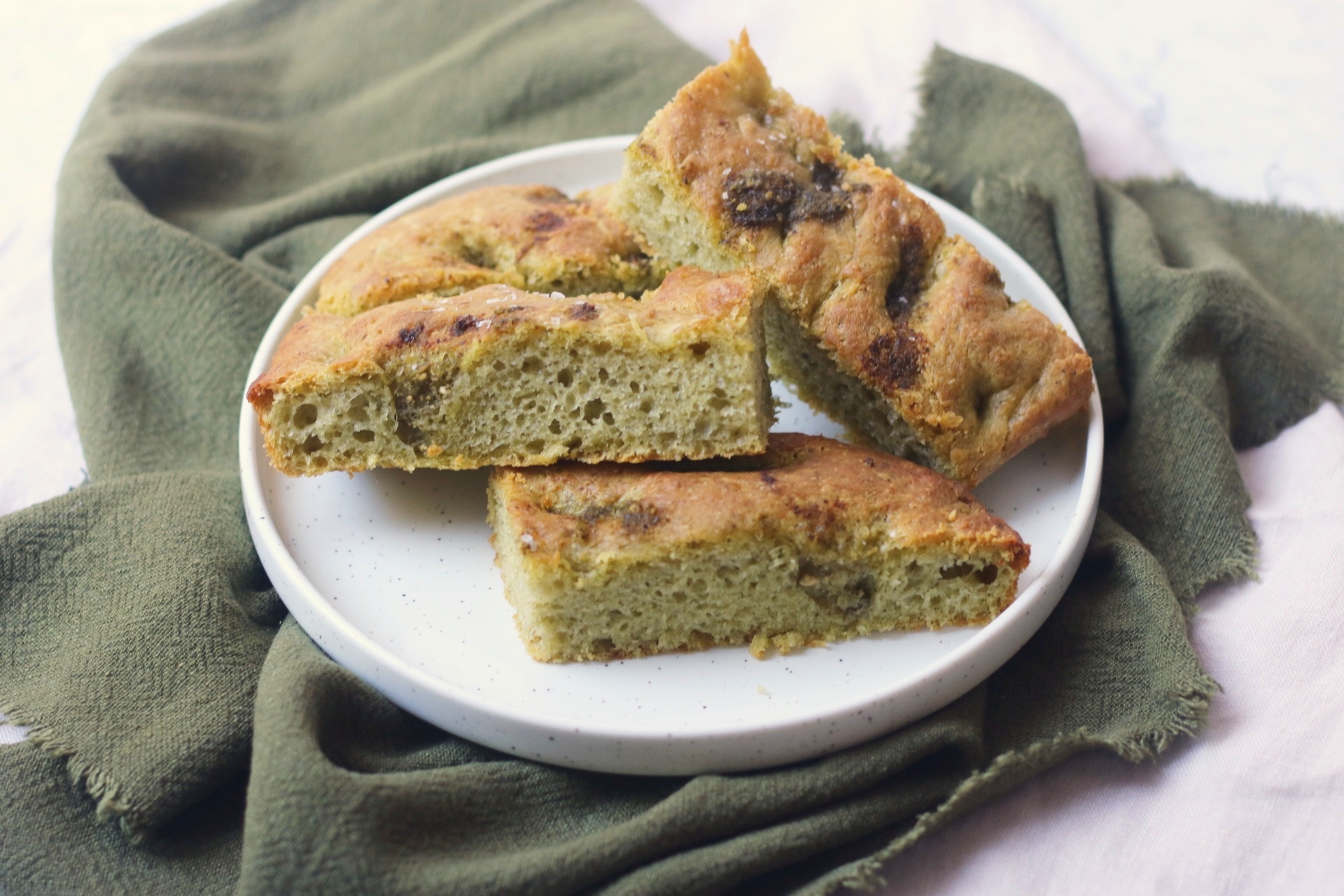
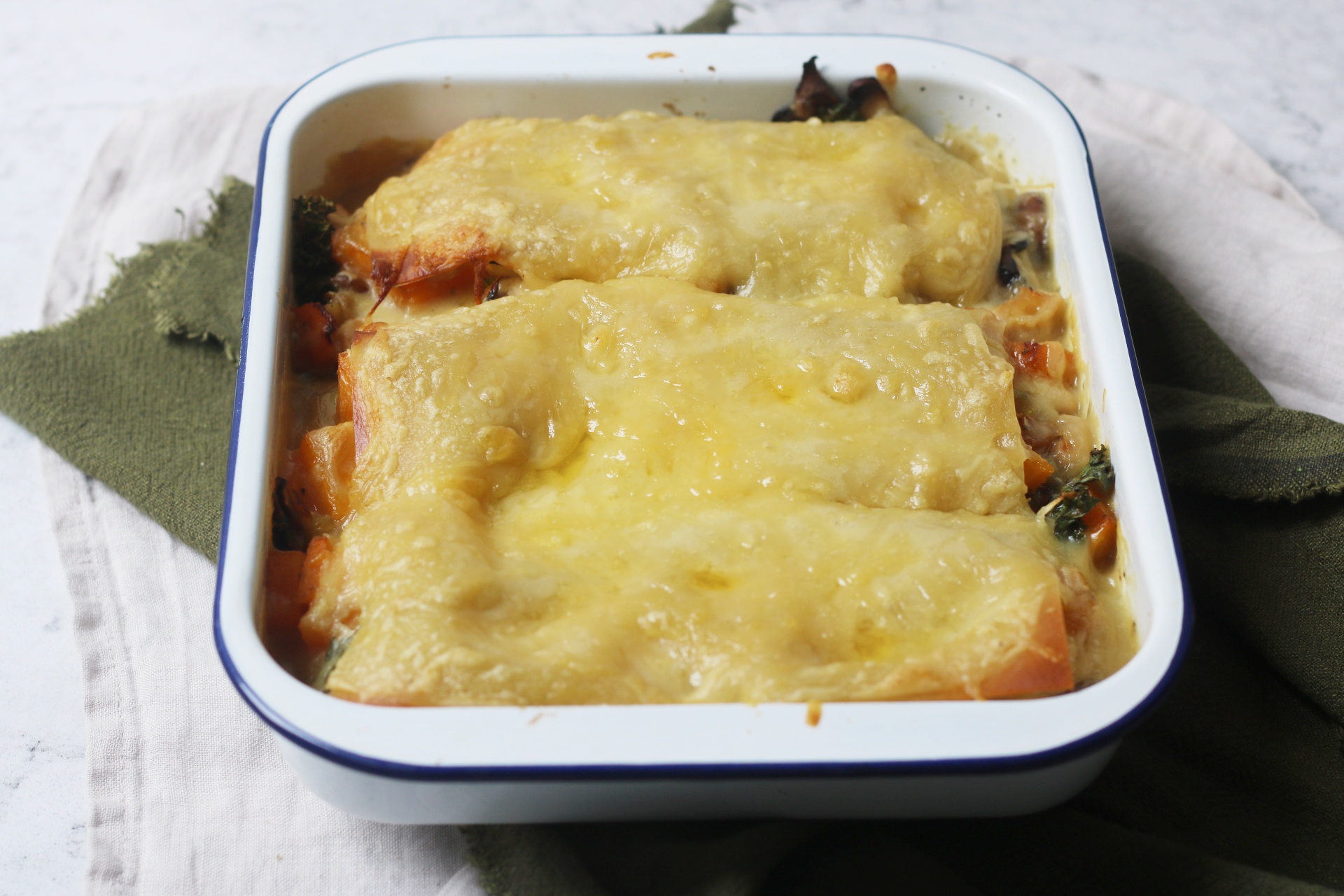
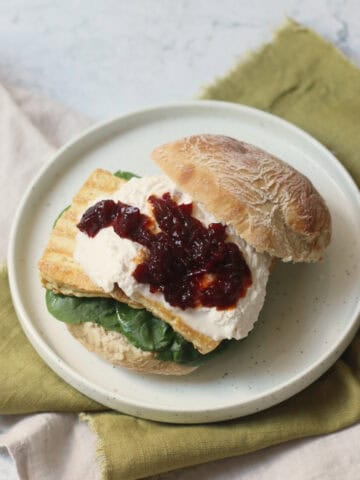
Xinmei @ Pudding Pie Lane says
this is lovely, my boyfriend bought his pasta machine to uni this term and we've always been meaning to make some pasta, but we never got round to it. And we were scared about how it would turn out, so I'll take some tips from you :)p.s. I'm so jealous you've finished your exams (albeit a long wait at the restaurant you went to!), hope they went well!p.p.s my boyfriend's sister is going to nottingham next year, I'm going to pass on this blog to her if that's okay 😀
Emmyw says
Definitely give it a go! It is SO much fun and so yummy!!! Ten times more flavoursome then the normal fresh packetted stuff!When do your exams finish then? Hope you don't have too much longer to wait! Then you'll be baking all the time! Good luck!And feel free to pass this on! I can tell her which restaurants not to visit haha!
lydia.silver says
Those are seriously impressive. I've always wanted to make pasta, but I don't have a pasta machine, do you reckon it would work with just a rolling pin? Good luck with your vegetable garden as well :)Lydia x
Emmyw says
Hi Lydia! I actually did a lot of research into the rolling pin method before making these as I had completely forgotten my Dad owned one! It takes a little longer, and a bit more perseverance, but basically once you've made the dough and kneaded it, you just need to roll it out long, in just the one direction, keep folding it back on itself and repeating.It definitely takes some elbow grease but it is most definitely do-able and so rewarding!You can find videos of people using this method on you-tube!I definitely recommend you give it a go!Emma x